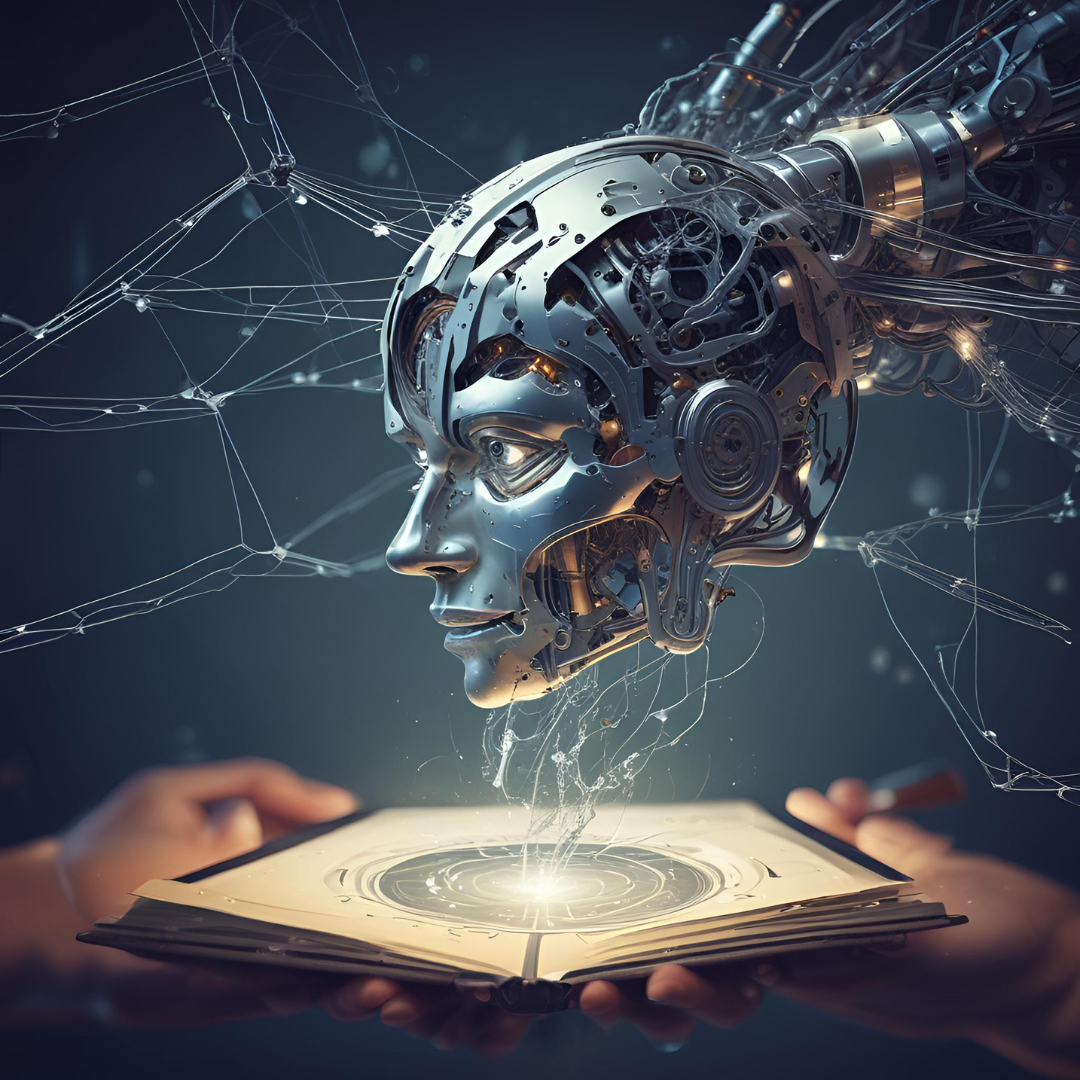Machine learning has become a game-changer in the world of technology, revolutionizing countless industries. As a branch of artificial intelligence, it empowers computers to learn from data, uncover insights, and make informed decisions without the constant need for human involvement. This article explores the core principles of machine learning, its diverse applications, key advantages, potential challenges, and the exciting possibilities that lie ahead. By understanding the transformative power of this technology, we can envision a future where machines collaborate seamlessly with humans, driving extraordinary advancements and shaping the world we live in.
Understanding Machine Learning
Artificial Intelligence's Machine Learning segment concentrates on designing algorithms that empower computers to acquire knowledge and forecast outcomes using data. Unlike conventional programming, where instructions are directly coded, ML models detect patterns and connections within data to reach conclusions or forecasts.
Key Concepts:
-
Data: The core of machine learning is data, which can take diverse shapes like written content, visual snapshots, audio recordings, and video footage.
-
Algorithms: The foundational principles and methodologies that shape the extraction of insights from information.
-
Models: The products of the training process; these are utilized to make forecasts or judgments based on fresh information.
-
Training: The act of providing information to a computational process in order to construct a representative system. This involves supplying relevant data that the algorithm can analyze and use to develop a functional model capable of making informed predictions or decisions.
-
Evaluation: Evaluating the model's effectiveness by applying it to a distinct dataset.
Types of Machine Learning:
-
Supervised Learning: The algorithm undergoes training using a labeled dataset, where each training example is matched with an output label. Prominent techniques encompass linear regression, logistic regression, and support vector machines.
-
Unsupervised Learning: The process employs an algorithm to analyze data that lacks labels, uncovering underlying patterns or groupings within it. This includes techniques such as k-means clustering, which groups similar data points together, and principal component analysis (PCA), which identifies the most significant features in the data by reducing its dimensionality.
-
Semi-Supervised Learning: A blend of guided and independent learning methods, employed when limited labeled data is available alongside an abundance of unlabeled information.
-
Reinforcement Learning: The computer program acquires knowledge by engaging with a real-world setting, getting positive or negative feedback based on its choices. This technique is frequently employed in designing robots and playing strategic games.
Applications of Machine Learning
Machine Learning's adaptability has enabled its utilization in various sectors, with each industry capitalizing on its capacity to manage substantial amounts of data and reveal valuable information that fuels advancements.
-
Healthcare:
-
Medical Diagnosis: AI-powered technologies can review medical scans and records, helping healthcare professionals identify various health issues, including cancer, diabetes, and heart-related problems.
-
Personalized Medicine: Machine learning models can foretell how patients may react to diverse therapies, allowing for the creation of specialized treatment approaches tailored to each individual's needs.
-
Drug Discovery: Artificial intelligence advancements have revolutionized the pharmaceutical industry, enabling faster and more efficient drug development. These technologies can accurately forecast the effectiveness of novel medicinal compounds and pinpoint the most promising candidates for further investigation. This innovative approach streamlines the drug discovery process, accelerating the delivery of life-saving treatments to those in need.
-
-
Finance:
-
Fraud Detection: Sophisticated machine learning algorithms meticulously scan transaction histories, quickly detecting and flagging any suspicious activities that could indicate potential fraud. These advanced systems work tirelessly to protect against financial crimes in real-time.
-
Algorithmic Trading: Financial institutions leverage machine learning algorithms to scrutinize market information, forecast price fluctuations, and carry out transactions at the most favorable moments.
-
Risk Management: Machine learning models scrutinize and handle potential hazards by studying past information and forecasting forthcoming risks. These models meticulously analyze historical data to identify patterns and trends, enabling them to anticipate and mitigate future uncertainties effectively.
-
-
Retail:
-
Customer Personalization: Retailers leverage machine learning technologies to gain insights into customer patterns and interests. By harnessing these advanced analytics, they can provide tailored product suggestions and targeted marketing campaigns, enhancing the overall shopping experience for their customers.
-
Inventory Management: Sophisticated AI systems analyze market trends and consumer behavior, enabling businesses to accurately forecast product demand. This data-driven approach helps maintain optimal inventory, minimizing the risk of shortages or excess supply. By precisely matching inventory to anticipated needs, organizations can enhance customer satisfaction while optimizing operational efficiency.
-
Price Optimization: Retailers dynamically modify prices using machine learning (ML) in response to demand, competition, and seasonality.
-
-
Manufacturing:
-
Predictive Maintenance: By anticipating equipment faults before they happen, machine learning algorithms lower maintenance costs and downtime.
-
Quality Control: To find flaws and raise the caliber of the product, machine learning algorithms examine production data.
-
Supply Chain Optimization: By controlling inventories, forecasting demand, and enhancing logistics, machine learning (ML) enhances supply chain operations.
-
-
Transportation:
-
Autonomous Vehicles: Self-driving cars can navigate and make judgments using sensor data thanks to machine learning algorithms.
-
Route Optimization: Delivery truck routes are optimized by ML models, which shorten delivery times and fuel usage.
-
Traffic Management: To improve traffic light timings and lessen congestion, machine learning analyzes traffic trends.
-
-
Entertainment:
-
Content Recommendation: ML is used by streaming services like Netflix and Spotify to assess customer preferences and make content recommendations.
-
Content Creation: By generating music, painting, and writing, ML algorithms help to push the bounds of creativity.
-
Audience Analysis: To comprehend viewing habits and preferences, machine learning algorithms examine audience data.
-
-
Energy:
-
Energy Consumption Forecasting: Machine learning algorithms forecast trends of energy usage, assisting utilities in controlling supply and demand.
-
Renewable Energy Optimization: The efficiency of renewable energy sources, such solar and wind power, is maximized via machine learning.
-
Grid Management: By anticipating and controlling demand fluctuations, machine learning models improve the stability and effectiveness of electricity grids.
-
Conclusion
Machine learning is a game-changing technology that can automate processes, provide insights, and spark innovation in a number of industries. Even though there are still obstacles, continued developments in machine learning algorithms, data caliber, and processing capacity should solve these problems and open up new avenues. As machine learning (ML) advances, it will become more and more important in determining the course of events in the future, improving our quality of life and our capacity to tackle complicated problems. In order to keep ahead of the quickly evolving technology world, individuals and companies alike will need to embrace machine learning and its applications.





Leave a Reply